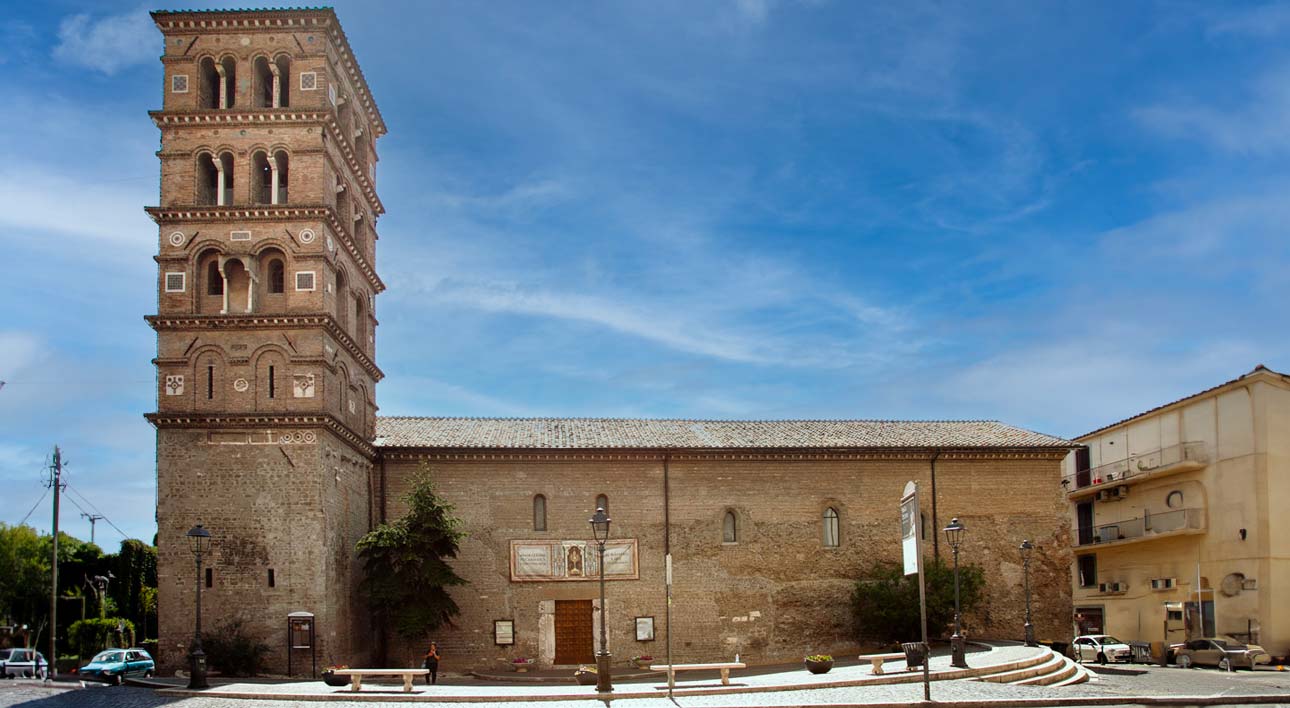Descrizione
Voluta da Papa Ormisda (514-523 d.C.) è stata ricavata da una grande sala delle terme romane edificate dall’Imperatore Caracalla. Un imponente restauro avvenne già nel XII sec., mentre nel XIV sec. vennero eseguite diverse modifiche, delle quali ancora oggi si può scorgere la presenza, come l’arco ogivale a due spioventi con mensole e colonne marmoree, situato sopra ad una porta posta sul lato occidentale della chiesa. La chiesa passò successivamente sotto il possesso della famiglia Savelli nel 1440; questi seppellirono, nell’ormai distrutta antica cappella, alcuni dei loro componenti. Queste tombe sono oggi visibili all’interno della chiesa. Anche alcune trabeazioni marmoree dell’età severiana sono conservate all’interno della chiesa, anche se si presentano sotto forma di altari o balaustre. Molti affreschi sono tutt’ora visibili sulle pareti del complesso, fra questi spiccano certamente quello raffigurante La Vergine del Segno, di età bizantina, e quello di dimensioni maggiori raffigurante S. Margherita e S. Onofrio (XIII-XIV sec. d.C.). Di grande impatto sono anche la pala dell’altare (XVI sec.) raffigurante la consegna delle chiavi a S. Pietro e gli stendardi del settecento. Per finire, sul lato esterno della chiesa volto ad oriente si possono ammirare due trabeazioni decorate minuziosamente risalenti all’età imperiale, che sono utilizzate come stipiti della porta; di grande fascino è anche il campanile romanico risalente al XIII sec.
English version
This church was built by Pope Ormisda (514 - 523 A.D.) from one of the big rooms of the baths that emperor Caracalla built for the legionaries stationing in Albano. In the 12th century it was restored deeply and other changes were made in the 14th century of which some can still be noticed today. The most noteworthy of them is the pointed arch with marble columns and brackets above a door on the western side of the church. In 1440 the church, which was nearly destroyed, become a property of the Savelli family who used it as a cemetery. The tombs where some members of this family are buried can now be seen in the church. There are also some marble trabeations of Severian period which have been transformed into altars and balustrades. On the walls we can still admire some frescos among which the finest are the one of the Virgin in a niche of Byzantine period and the larger one showing St. Margaret and St. Honofrius (12th - 13th cent). Other fine works are the large 16th century altar-piece with a representation of St. Peter receiving the keys, and the eighteenth-century standards. Last but not least, two finely decorated, imperial Roman trabeations that have been used as door-jambs can be admired outside the church on the eastern side together with the beautiful twelfth-century Romanesque bell-tower.
Servizi
Modalità di accesso
Accesso alle persone con disabilità.
